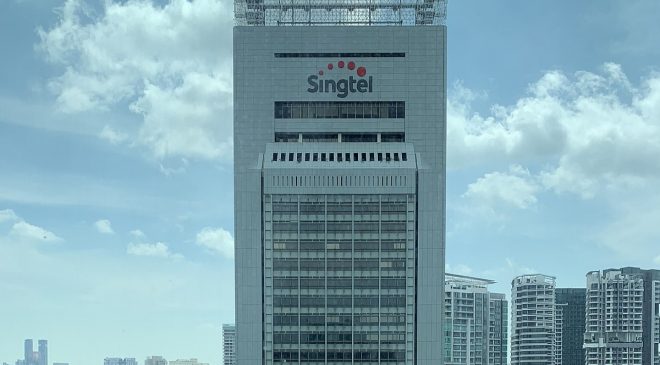
COVID-19 drives strong interest and openness towards technology among customers.
At SingTel’s 28th annual general meeting in late July the Singapore-based telecommunications provider detailed how COVID-19 had impacted its business, as well what technologies will help it move forward through the pandemic.
According to the SingTel the drop-in business activities, enterprises are reviewing their costs and purchase decisions, leading to a decline in SingTel’s roaming and equipment sales.
SingTel has experienced delays in ICT and infrastructure spending, while the rollout of projects has been disrupted by constraints on manpower and site access.
COVID-19 has driven strong interest and openness towards technology among SingTel customers with more customers using its digital channels for purchases, payments, remittances, and customer care.
“Business owners are looking for scalable, reliable, and secure digital solutions to strengthen their operations and prepare for the upturn post-COVID,” SingTel states.
“As a key enabler of communications and technology, we are strongly positioned to seize these opportunities and emerge stronger for the longer term.
The telco believes COVID-19 has illustrated the importance of connectivity and quickened the adoption of digital technology for work, communications, and entertainment.
While 5G is set to receive a lot more attention as customers, enterprises, seek to position themselves for a digital-led recovery. And the technology will form the cornerstone of the digital era. “We are embarking on a multi-year investment program, to leverage 5G to deliver earnings growth and value for our shareholders and innovation that will benefit the wider communities,” states SingTel.
“We are focused on driving longer term growth, and ensuring we have the capacity and financial headroom to weather the industry and economic headwinds.”
The four key growth areas for SingTel were:
- Continue multi-year 5G capex program to strengthen network and market leadership, and to create new revenue opportunities
- Work with our associates to grow their digital and enterprise businesses by leveraging the Group’s scale and operating experience
- Enhance our capabilities and scale our ICT and cyber security businesses to better engage customers and set us apart from the competition
- Continue to transform our operating model for greater efficiencies, better customer experiences and a leaner cost structure
“We are one of the largest data centre operators in Singapore, with a network of 9 data centres that support co-location, managed hosting and other ICT services in Singapore, Australia and Hong Kong,” SingTel states. “For MNCs with regional requirements, we offer an integrated data centre proposition, leveraging our associates’ data centre foot-print and our extensive connectivity in the region.
To meet customers’ increasing demand for computing power, cooling, resiliency and security, our data centres are state-of-the art facilities built up to Tier 4 specifications under industry benchmarks set by the Telecommunications Industry Association (TIA).”
SingTel expects demand for data centre capacity to increase as data consumption grows, spurred by the rising adoption of cloud technologies, IoT services and the arrival of 5G, which will catalyse the development of innovative Enterprise applications with the Edge Cloud environments.
“We are committed to invest in our data centre infrastructure to meet the needs of our enterprise customers and for our 5G needs,” SingTel states. “We have a strong track record in data centre operations and will critically review any opportunities in this space, with a view to optimise returns for shareholders.”
According to the telco 5G is a multi-year investment program for long term growth, with unique capabilities, that will be a game-changing for smart cities and living.
“We are moving beyond connectivity to create new use cases with our enterprise customers and, for consumers, exciting new experiences,” states SingTel. “However, these new applications and use cases will need time to develop.
Availability of chipsets and equipment and the ecosystems need time to mature.”
However, SingTel doesn’t expect 5G will be a key driver of returns in the immediate horizon. In the mid to longer term, we expect new revenue opportunities from potential consumer applications, such as cloud gaming, and enterprise applications that leverage distinctive 5G capabilities, such as networks slicing and edge computing.
“In the long run, 5G is also a more cost-efficient technology, as customers embrace these innovation and opportunities,” states SingTel. “In Singapore, our 5G rollout will be progressive, covering half of Singapore by end-2022 and nationwide by end of 2025.
We expect that the industry will see more rational pricing decisions to enable acceptable returns and continued network investments.”
In Australia SingTel’s 5G rollout plan will ensure Optus maintains its competitive edge in the market and drives return on investment.
“We have not provided any capex guidance for FY 21. With any network cycle, there will be an increase in capex at the outset, SingTel states. “The timing and phasing of our capex is important. For competitive reasons and to be able to respond quickly to step-changes in customer demand, we must ensure a timely rollout. We also plan to ride the cost curve downwards.”
One thing the telco is keeping a close on eye is the rising geopolitical tensions pose mounting risks for global trade and world economic growth.
“Singapore is an open economy, while Asia and Australia (where more than 65 per cent of our earnings are derived) have larger domestic economies,” said SingTel. “We are watching developments in international trade closely. Geopolitical tensions are amongst the many risks affecting the world right now.”
SingTel plans to adopt a holistic approach in evaluating all risks that could potentially affect our businesses and investments.
This holistic approach calls for the diversification of risks and guides its decisions in various parts of its business, including choice of technology, supply chains, credit and vendor management.




